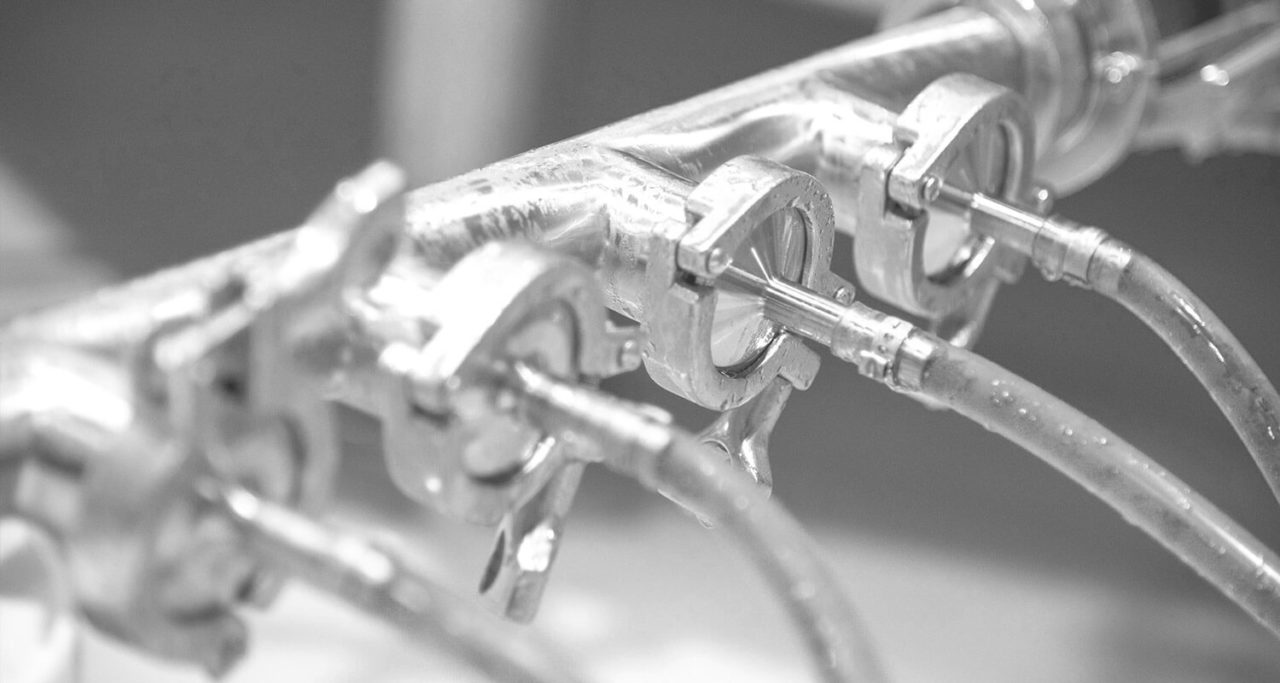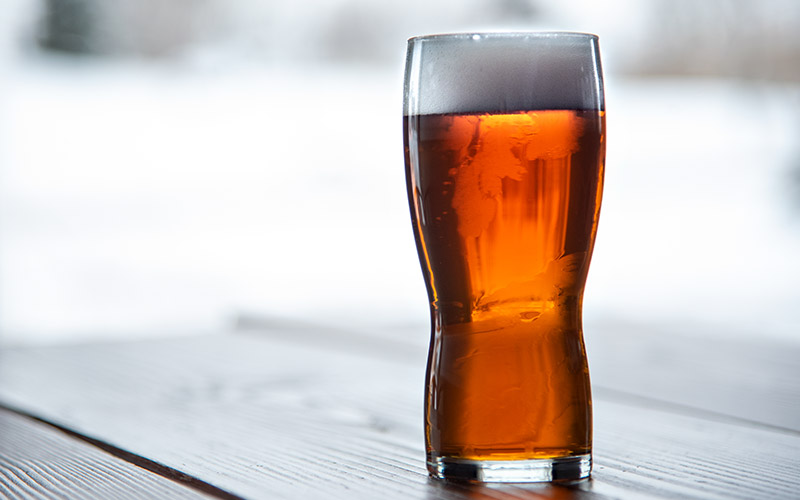Picture a lager. What does that image look like? Is it pale, thin, and highly carbonated? That would make sense. Light lagers, often made with adjuncts to make them lighter and inaccurately called pilsners, make up a huge majority of the beer consumed around the world (e.g. Budweiser). However, these styles do not define what a lager is… and while there is a whole lot more to it, the definition is actually very simple.
A lager is a beer that has been fermented and conditioned at low temperatures. That’s it! Everything else is optional. Typically, these temperatures are around 55F as opposed to the typical 65 to 72F range of ales. After that, the beer is conditioned at even lower temperatures, below 40F and as low as 28F. This is the actual lagering phase.
“Lager” is the German word for storage. In medieval times (no, not the fun medieval dinner theater!), some beers were stored in cellars and caves to mature and keep the beer fresh until it was ready to drink. Oftentimes, beer was mass-produced during colder months when it was less likely to become infected and stored cold to keep it fresh for longer. They didn’t know exactly why this worked but they knew it did. They also didn’t know they would create a new strain of yeast.
While cooler temps are primarily what make lagers different, they are also often fermented with a strain of yeast quite different than others. It’s thought that during the 1400s a hybrid was created through the interaction between ale yeast and a new yeast thought to originate in Patagonia (South America). This new strain thrived by natural selection as it tolerated the cold temperatures and was able to consume more of the sugars in the beer during its long cold storage. Ale strains do not do this.
You may have heard of top-fermenting or bottom-fermenting yeast when referring to ale and lager strains. Although all yeast is in suspension during active fermentation, warm temperatures cause lots of activity and action on the surface, and cold temperatures cause the yeast to slow and sink to the bottom of the fermenter. Ale strains will stop fermentation when it gets too cold while a lager strain will keep working, even at the bottom. The cold tolerance of this new yeast created a beer that was clean and less likely to spoil. It would be another 300 years until we fully understood the process of yeast in fermentation, but these medieval brewers knew that something was happening and were able to harness this new yeast and spread it throughout Germany and, eventually, the world. We owe ya one medieval brewers.
Let’s return to that image we started with – the pale, fizzy, light beer. This is only the latest style from centuries of industrialization and commercialization. Originally, almost all beers were fairly dark and surely smokey. The development of malting techniques in England and advances in science throughout Europe led to better quality and more diverse malt. This allowed for a range of styles that were born from tradition and made modern. Here are some terms that you are most likely to hear when referring to lagers:
Dunkel – Dunkel means dark and is also used to describe a favorite beer of Munich that is of moderate strength, dark, and malty. A true classic.
Vienna – Considered the first pale lager, the Vienna lager was created in Austria in the 1800s using English malting techniques and a bottom-fermenting yeast from Munich. Not very pale but much lighter than what was typical at the time.
Pilsner – Pilsner was created for the Czech city of Pilsen to improve upon a dismal beer scene. It was crafted using similar techniques to its predecessor, the Vienna lager, but with much paler malt. The characteristic soft water of the area made the local Saaz hops shine bright making for a malty, bitter, aromatic, and expertly balance beer.
Helles – Helles, meaning bright or pale, was a response to the growth of Pilsner. All over the world people wanted paler beers and the people of Munich were no different. Helles a more malty, less hoppy, and very drinkable beer was the answer.
Bock – Bocks are a category of strong, very malty lagers. Strong beers can also be called starkbier in German. Other terms are often applied like maibock, a pale and strong beer made for spring and also called hellesbock, doppelbock means double and is of greater strength and referred to as liquid bread as it has sustained many monks during fasts, and eisbock being a strong beer that is ice distilled by partial freezing to concentrate the flavors. Oh, and the goat thing is just a little play on a particular dialect pronouncing the city of Einbeck as ein bock, “the goat.”
Rauchbier – Rauch is smoke. Still produced traditionally in Bamberg, these beers are rich and smokey and worth seeking out.
Marzen – Marzen is the term for March and represents a style of beer made at the end of winter, lagered during the summer months, and enjoyed in the fall, the time of Oktoberfest. The beer we call Marzen is a stronger version of the Vienna lager.
Schwarz – Schwarzbier is a black beer. Darker than the Dunkel but usually lighter in body. Expect a pleasant roast character and a surprisingly drinkable beer.
Decoction- Sometimes you will see the term decoction used when referring to traditionally made lagers. This is a way of removing a portion of the mash, boiling it, and adding it back to raise the temperature of the whole mash. Originally this was done as a way of making the most of inefficient malts and reaching the correct temperatures ranges needed for these types of beer. Today it is largely considered unnecessary with our modern malts and technology. However, many people agree that it adds a depth of character that may be hard to achieve without it.
But what about Anchor Steam and Rogue Dead Guy, you ask? Are they lagers or ales? Not everything is one or the other. Anchor Steam uses a lager strain but at ale fermentation temperatures. Dead Guy Ale is described by Rogue as a maibock and is an ale strain that is lagered. And when it gets confusing like this we just call it a hybrid, much like classics from the German tradition, Alt and Kolsch. These beers use top-fermenting ale yeast and are lagered at cool temperatures to produce a clean profile.
You can find all manner of lagers and hybrids today. Some traditional, most not, all worth trying. Grab a rauchbier and smoked sausage or a dunkel and some cheddar. Throw back a Maß (stein) of helles while sitting under some chestnut trees. Or… come into Alter and grab a pint of our amber lager, Search Engine. Brewed with traditional flavors in a modern brewery.
Prost!
James


